PROGRAMS OVERVIEW
PROGRAM ELEMENTS
Academics In Motion has five key components to its program. It is the interplay of these components and key personnel that have establish AIM as a leader in the field of youth development. These are also the core competencies around which the program will come to be known.
Program Management→
Youth Development Coach (YDC)→
Training & Development→
RESEARCH & EVALUATION→
Community Coalition→
Summer Camps→
PROGRAM DESCRIPTION
The AIM program has been developed based on a model established by Springfield College which incorporates the best practices from the field of Youth Development. This multi-dimensional program delivery embraces recommendations from experts in the fields of positive youth development, resilience training and asset-based initiatives. As such, AIM’s program embraces the four pillars of successful youth development programs:
1. Engaging students in an appropriate CONTEXT for growth. That is, having them participate in sports and other activities that are voluntary, challenging and require commitment and effort over time;
2. Surrounding them with positive EXTERNAL ASSETS, including caring adult mentors in the form of YDC’s, and community and school leaders;
3. Teaching students INTERNAL ASSETS, such as interpersonal, decision-making, and problem-solving skills, and providing them with opportunities to try out their skills in community engagement activities; and
4. Using RESEARCH and EVALUATION to identify and implement best practices and guide program improvements.
Using the four pillars of successful youth development programs as our guiding principles, we are confident in the successful delivery of our program.
SUCCESS MEASURES
AIM’s key success factors are measurable and relate to:
· Increases in Grade Point Average
· Increases in Graduation Rates
· Increases in College Attendance
· Increase in Attendance
· Community Service hours served
· Life Skill modules completed
· Improved Performance on Regents Exams
AIM will also measure success utilizing qualitative research such as:
· Quality of YDC /Student participation relationship
· Perception of the program among key stake holders:
o Board of Education "support"
o Teachers "involvement"
o Parents/Guardians "involvement"
o Guidance Counselors "collaboration"
o Principals/Administration "support and involvement"
o Local Business & Corporations "support"
o Local Colleges and Universities "involvement"
o School Community "support and involvement"
o Police and Fire Dept "involvement"
TARGET USERS
Using extra-curricular activities to drive participation leading to reduced dropout rates, increased class room attendance and overall preparedness for college or career.
The schools that AIM seeks to serve typically have the following characteristics:
-50% or lower graduation rate.
-Title 1 schools (No Child Left Behind Act).
-At least 60% of the students are in the free-school lunch program.
-Approximately 85% of the student body is African American with a significant number of immigrant and non-English speaking children.


